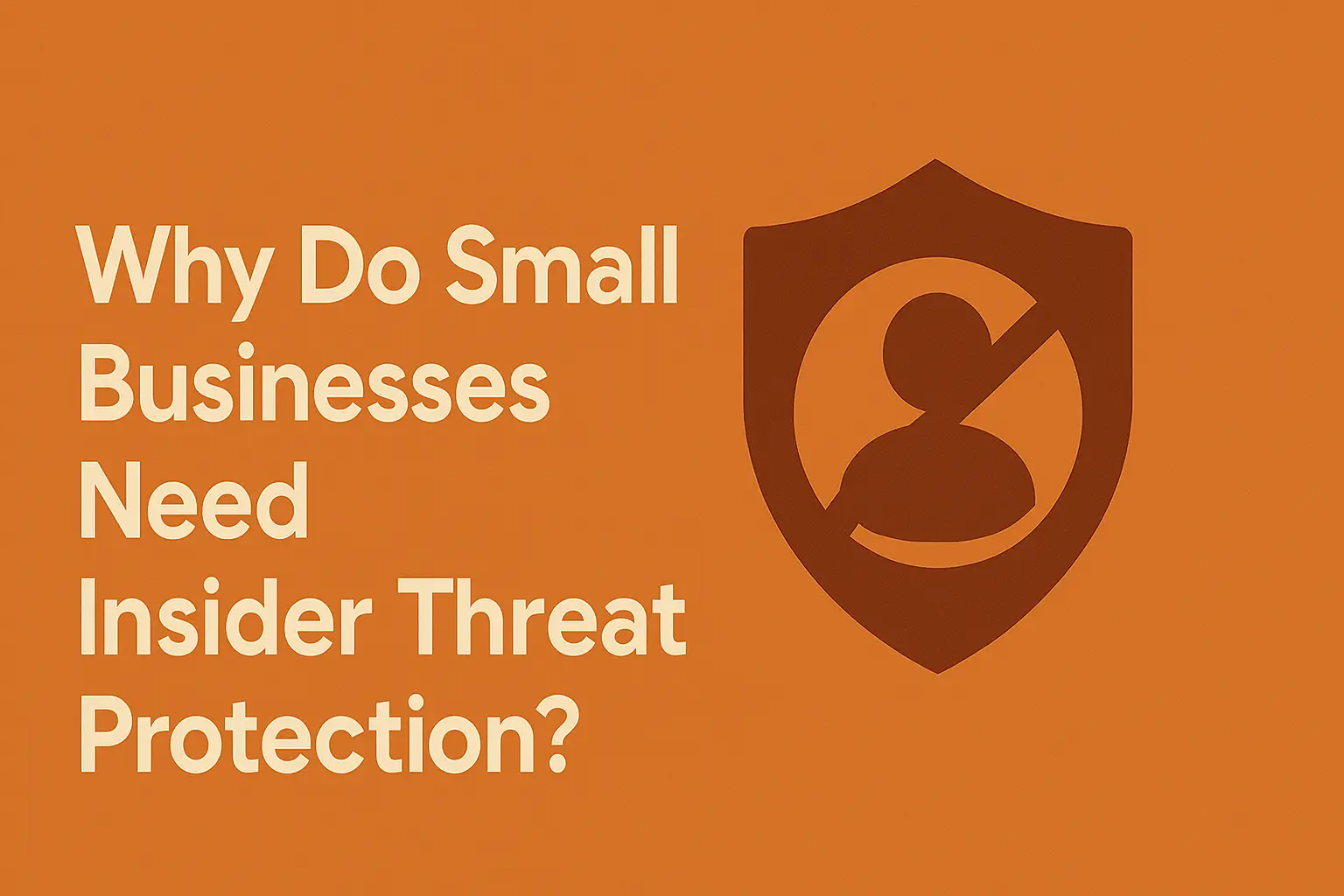In today’s hyper-connected digital world, data has become one of the most valuable assets for any business. While many small businesses focus on protecting themselves from external cyber threats like ransomware or phishing, the threat that lurks within—insider threats—is often overlooked. Yet, insider threats can be just as, if not more, damaging. So, why do small businesses need insider threat protection? Let’s explore.
The Rising Threat of Insiders in Small Businesses
Insider threats refer to security risks that come from within an organization. These threats could be caused by current or former employees, contractors, or business partners who have inside information about the company’s security practices, data, and computer systems.
According to Verizon’s Data Breach Investigations Report, insider threats account for approximately 22% of security incidents. For small businesses, which often operate with limited IT resources and smaller teams, even a single insider breach can lead to catastrophic consequences.
Common Types of Insider Threats
- Malicious insiders – Employees who intentionally steal data, commit fraud, or sabotage systems.
- Negligent insiders – Well-meaning employees who inadvertently compromise security, such as by clicking on a phishing email.
- Compromised insiders – Users whose accounts have been hijacked by attackers.
Why Small Businesses Are Vulnerable
Small businesses often operate under the misconception that they are too small to be targeted. However, they are actually prime targets due to their lack of sophisticated security infrastructure. Here are a few reasons why small businesses are particularly vulnerable:
- Limited IT Staff: Many SMBs cannot afford a full-time cybersecurity team.
- Minimal Employee Training: Lack of awareness leads to poor security hygiene.
- Weak Access Controls: Excessive permissions or poor password practices.
- Use of Outdated Software: Legacy systems without proper patches or updates.
These gaps provide fertile ground for insider threats to take root, especially if employees are not being monitored or behavior patterns are not being analyzed.
What Is Insider Threat Protection?
Insider threat protection refers to the tools, policies, and practices that detect, prevent, and respond to security threats posed by insiders. Modern insider threat protection systems often use artificial intelligence (AI) and machine learning (ML) to identify suspicious behaviors that deviate from normal usage patterns.
Key capabilities include:
- User and Entity Behavior Analytics (UEBA)
- Real-time monitoring and alerting
- Access control and identity verification
- Data loss prevention tools
- AI-based risk scoring
Benefits of Insider Threat Protection for Small Businesses
1. Prevention of Data Breaches
Insider threat protection tools can detect unusual data transfers, unauthorized access to files, and attempts to bypass security protocols before sensitive information is stolen.
2. Employee Accountability
Monitoring tools create a digital audit trail of employee activity, which not only deters malicious intent but also helps in investigations when incidents occur.
3. Compliance with Regulations
Many small businesses handle sensitive customer data that falls under regulations such as GDPR, HIPAA, or PCI-DSS. Insider threat protection is often a critical component of meeting compliance requirements.
4. Cost Savings
The average cost of an insider threat incident is over $11 million, according to Ponemon Institute. For SMBs, one major incident can mean the end of operations. Investing in proactive protection is far less costly than recovering from a breach.
5. Business Continuity
By identifying and mitigating threats early, businesses can prevent downtime and maintain customer trust, which is vital for sustained growth.
How AI Enhances Insider Threat Detection
Traditional security tools often rely on rules and signatures, which can miss more sophisticated or subtle insider threats. AI-powered tools, however, adapt and learn from user behavior over time, allowing for:
- Behavioral Baselines: AI learns what “normal” looks like for each user.
- Anomaly Detection: It flags deviations from the norm that may indicate a threat.
- Contextual Analysis: AI considers multiple factors (time, device, location) to evaluate risk.
- Automated Response: In some systems, AI can trigger automated actions, such as temporarily blocking access or alerting the admin.
Cost of Inaction: Real Consequences for SMBs
Without insider threat protection, small businesses risk:
- Data Breaches: Exposed customer or proprietary data can lead to legal issues and lost trust.
- Financial Loss: From lawsuits, fines, and remediation efforts.
- Operational Disruption: Systems may need to be taken offline for investigation and recovery.
- Reputational Damage: A breach can destroy customer confidence overnight.
In fact, 60% of small businesses shut down within six months of a cyberattack, according to the U.S. National Cyber Security Alliance.
Getting Started: Affordable Tools for SMBs
Fortunately, there are insider threat detection solutions tailored for small businesses. Many are cloud-based, offering:
- Low upfront costs
- Easy setup and integration
- Scalable protection as the business grows
Popular features to look for:
- Behavior analytics dashboard
- Role-based access control
- AI-powered risk scoring
- Integration with Microsoft 365 or Google Workspace
Recommended tools include:
- Teramind
- Ekran System
- Varonis
- Code42
Final Thoughts & Action Steps
Insider threats are not just a big business problem. In fact, small businesses often suffer more because they lack the resources to bounce back from a major breach. Fortunately, advances in AI and cybersecurity now make insider threat protection accessible and affordable.
Actionable Steps:
- Audit who has access to what in your organization.
- Train employees on safe data practices.
- Deploy an AI-powered threat detection tool.
- Monitor behavior for unusual activity.
- Develop an incident response plan.
By taking these proactive steps today, small businesses can secure their future and build trust with customers, partners, and employees alike. Don’t wait until it’s too late.
